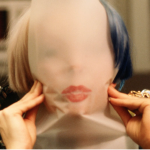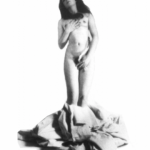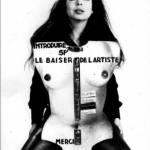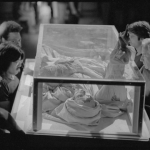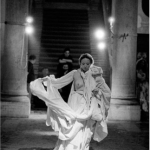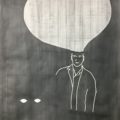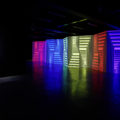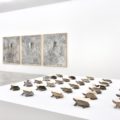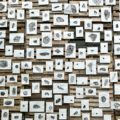ORLAN – “CORPS-SCULPTURES”
ORLAN, five letters and international recognition. A pioneering artist since the 1960s, his work breaks the rule, destabilizes and challenges. The media coverage of his surgical operations has somewhat constrained his career vision and established his artistic brand. However, his entire work remains an experiment. The one of her image and body, which she crushes, sculpts and deforms to achieve a singular Beauty and an ugly claim thwarting “the mask of the Innate” according to the artist. Contrary to all conventions, his extravagance shows – even today – the social, cultural or political issues that generate his work. Anything that should not be done, ORLAN does. Before artistic standards, it is indeed those of our own culture that she compromises in her many performances, which began in 1964. The same year that, for art critic François Pluchart, the artist’s body became a “material”. What could be more significant than to be able, on the occasion of the Month of Photography in Greater Paris, to immerse yourself in the artist’s polymorphous artistic Manifesto through two exhibitions, respectively at the Maison Européenne de la Photographie (until June 18) and the Galerie Michel Rein (until July 22).
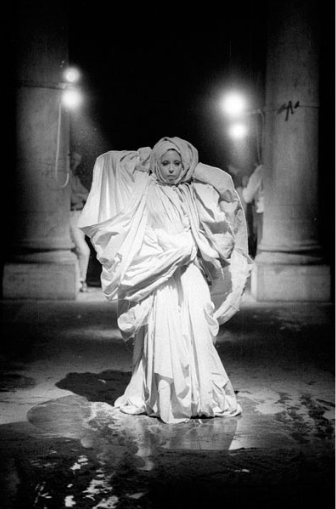
The body is the matrix of ORLAN, its artistic standard. It is within and outside this organic envelope, symbol of both social and cultural pressures, that the artist operates. It generates a quest for the re-appropriation of her body, which then becomes the place where her artistic and feminist action is inscribed. In 1979, ORLAN performed a 2h30-3h performance organized by Jorge Glusberg (Director of the National Museum of Fine Arts of Buenos Aires), whose documentary study Le Drapé, Le Baroque, Palazzo Grassi and other fold sculptures is presented at the Galerie Michel Rein. All the photographs, gathered in two rooms punctuated by a video and a sculpture of the artist, guide us through the performance, from the dressing of ORLAN by assistants to its staging in the Palazzo Grassi until its disappearance in a boat waiting for it at the end of the pontoon of the boats. The photographs are the archives of his performative steps, they are all of the same format and in black and white. The interest also lies in the setting in motion of this Madonna in ecstasy, similar to the saint Therese of Avila abandoned by the angel, orchestrated by the assistants thanks to nylon threads connected to each fold of the drape.
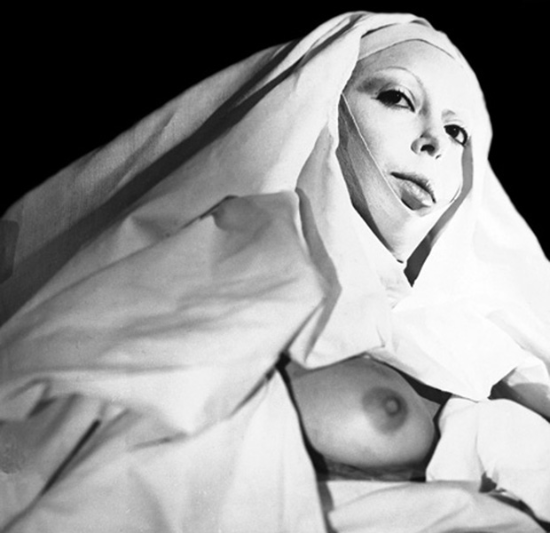
“Holy ORLAN” lets its body move like an automaton, alternating figurative poses in the image of a cross, or eloquent pointing the finger of the designation. Little by little this key sheet falls and exposes first the breast replacing the finger and then the artist’s hair. “Cover this breast, which I cannot see.” On the contrary, ORLAN displays and generates a shift from the sacred to the profane, from the image of a saint who, according to the definition “is by essence, perfection and absolute beauty” to that of a woman in her purest humanity. This performance highlights her conception of the body, which for her is covered with a multitude of images. Striptease does not exist for ORLAN, so it plays a “show to see” already formatted. This flashy approach proves her fascination for Baroque art, which plays a major role in her art, as she herself says: “It is the lesson of the Baroque that I have most retained and applied to my works”. Excess and artifice are thus at the service of his artistic situations. Indeed, the image of the Saint in drapery, of this white Virgin is recurrent, just like the fold, becoming body and sculpture, thus banishing all constructive limits.

At the beginning of the exhibition, the MEP (Maison Européenne de la Photographie) presents various series of photographs from the beginning of her career, to a period (1960-1980) when the freedoms of being a woman and an artist were almost non-existent. Among these photographs, one is significant, we see the naked artist holding between his spread legs a female model. Scandal, ORLAN gives birth to her loves me (1964). The artist liberates himself and becomes the arbiter of his own body: “look at what I am”: a woman-artist, “look at what I produce”: art. Finally, ORLAN builds. The place of birth in her creation is major, art for her living only in a perpetual renewal. Like Botticelli’s Birth of Venus, ORLAN dramatizes her body transformed into a statue of herself, the title of her first series of photographs is not insignificant, they are BODY-SCULPTURES. ORLAN forms its double allowing it to demystify the models it fights and to stimulate the debate wishing to change things most often with derision. His work Le Baiser de l’artiste, created in 1977 during the FIAC, attests to this, constantly repeating in one of the bays of the Grand Palais “a real artist’s kiss for 5 francs! ». The controversy over her body becoming an artistic commodity also controversially affects the place of women in society. Her voice singing this sentence resonates in the exhibition and marks her presence in the background. This performance gave rise to a work bringing together on a pedestal two parts SAINTE ORLAN, a model of a photograph of the draped artist and the other ORLAN CORPS with the remains of the 1977 performance.
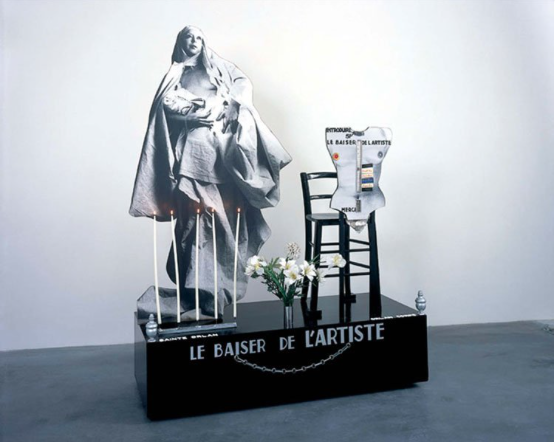
In 1992, ORLAN created the “Carnal Art”, defining the body as such: “a modified ready-made because it is no longer this ideal ready-made that just needs to be signed”. Its transformation continued in the 1990s in the operating room. Plastic surgery has given birth to its uniqueness, the moment of performance evolves in a sustainable way. Thus, the hybridization of ORLAN confronts us with a “disturbing image”, its self-creation never ceases to push aside conventional limits. It is therefore up to us to also want or know how to overcome them.
Diane Der Markarian
- ORLAN, 4eme Opération-chirurgicale-performance, 8 décembre 1991, Paris, Empreinte de la bouche sur masque de calque, Série “Opérations-chirurgicales-performances”, C-print brillant, cadre bois, Plexiglas, 160 x 115 cm © ORLAN / ADAGP
- ORLAN, Naissance d’ORLAN sans coquille, 1974, Série “Striptease occasionnel à l’aide des draps du trousseau”, tirage photographique noir et blanc collé sur bois, 97 x 170 cm © ORLAN / ADAGP
- ORLAN, Le Baiser de l’artiste, 1977, 65 x 43, Photographie noir et blanc, Collection Maison Européenne de la Photographie, Paris, France © ORLAN
- Etude documentaire, Le Drapé, Le Baroque, Palazzo Grassi, 1979 © ORLAN
- Etude documentaire, Le Drapé, Le Baroque, Palazzo Grassi, 1979 © ORLAN
Featured image : Etude documentaire, Le Drapé, Le Baroque, Palazzo Grassi, Venise, 1979, © ORLAN.



